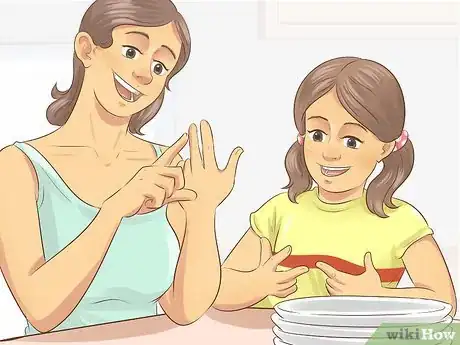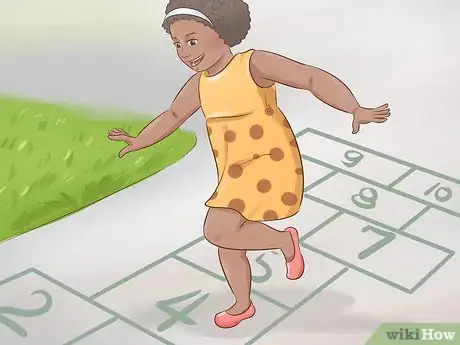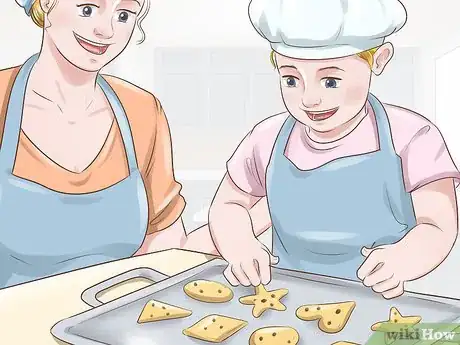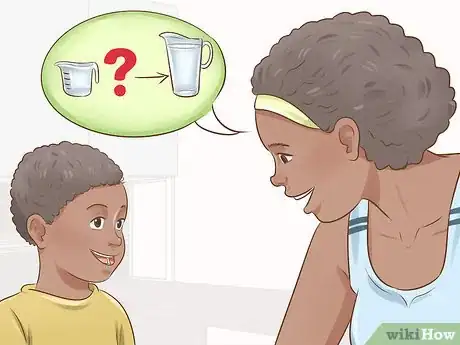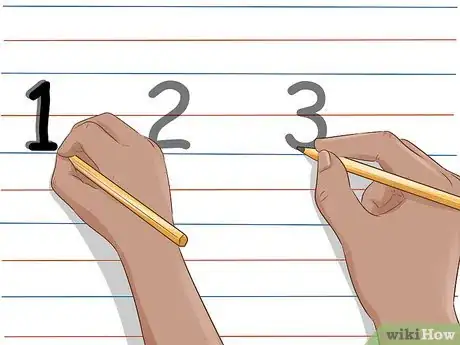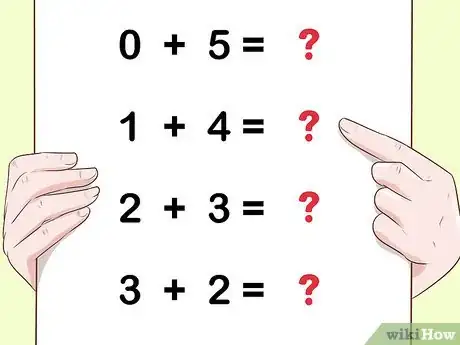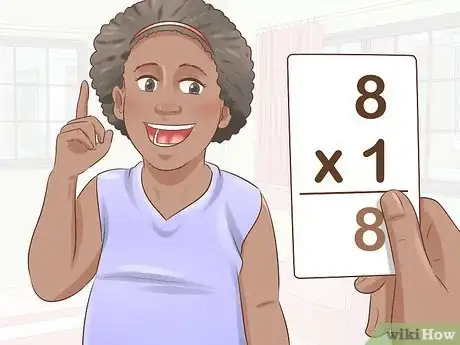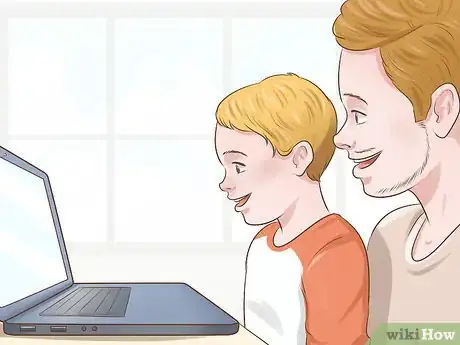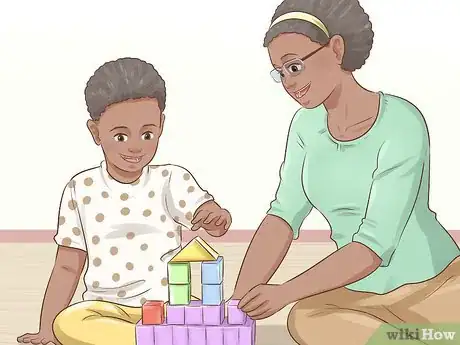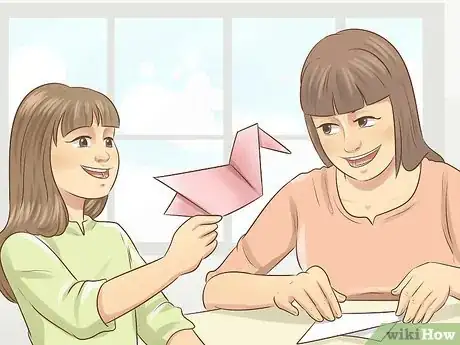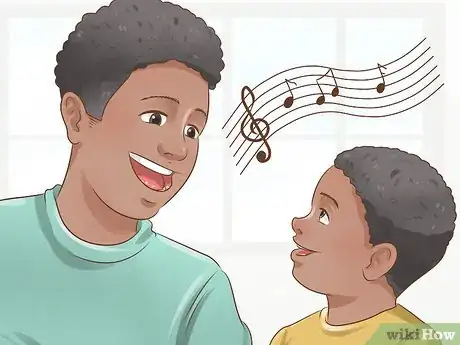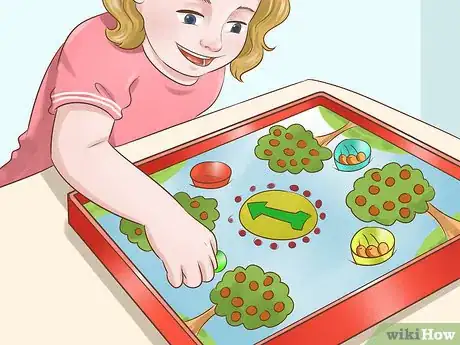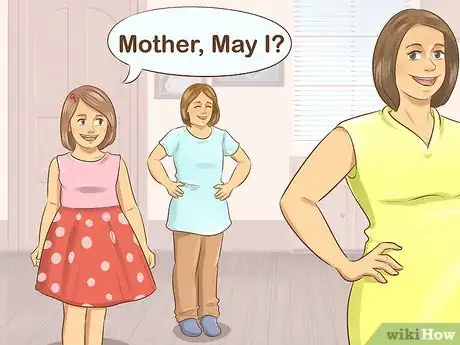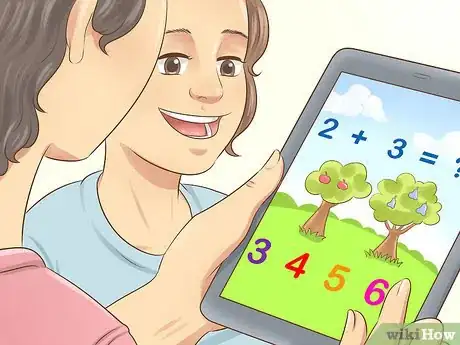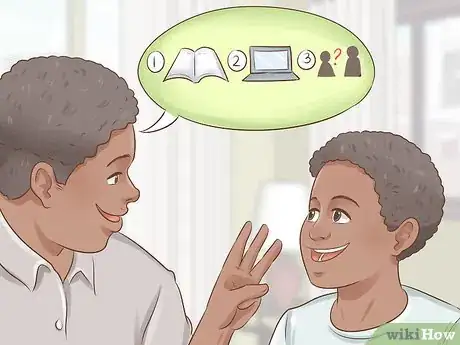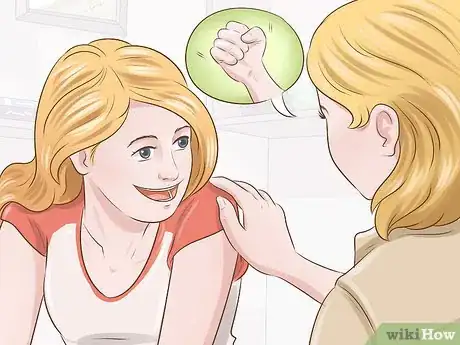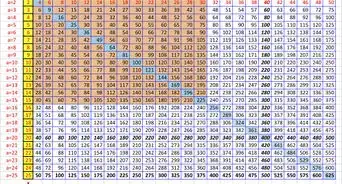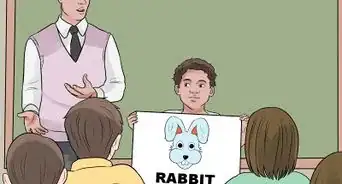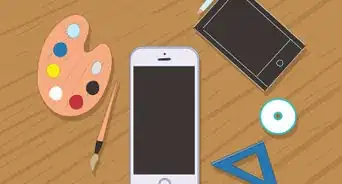This article was co-authored by Ronitte Libedinsky, MS. Ronitte Libedinsky is an Academic Tutor and the Founder of Brighter Minds SF, a San Francisco, California based company that provides one-on-one and small group tutoring. Specializing in tutoring mathematics (pre-algebra, algebra I/II, geometry, pre-calculus, calculus) and science (chemistry, biology), Ronitte has over 10 years of experience tutoring to middle school, high school, and college students. She also tutors in SSAT, Terra Nova, HSPT, SAT, and ACT test prep. Ronitte holds a BS in Chemistry from the University of California, Berkeley, and an MS in Chemistry from Tel Aviv University.
There are 12 references cited in this article, which can be found at the bottom of the page.
This article has been viewed 283,784 times.
Whether you're homeschooling or you just want to give your child a head start on math, it's easy to get your child to start thinking mathematically. The key is to treat it like you would reading. That is, make sure you're talking about math every day with your child, just like you try to read to your child every day. You can also sit down to get more serious about certain topics, as well as make sure the games your child is playing incorporate math.
Steps
Incorporating Math in Day-to-Day Life
-
1Count with your kids. One of the most basic math lessons you can use in your everyday life is counting. If you naturally incorporate counting into your speech, your child will start picking up on it and doing it themselves. Count backwards as well as forwards, then move onto counting by twos, threes, fours, fives, and so on. For example, you could count how many:[1]
- Plates you need to set the table.
- Toys are on the floor.
- Stop signs are on the way to school.
- Stairs are in a staircase.
-
2Work on number recognition. Your child can't communicate math on paper until they know what numbers look like when written. As you notice numbers in the world, point them out to your child.[2]
- For a younger child, try a number puzzle or playing hopscotch.
- For an older child, try bus numbers at a bus stop or the house numbers on a house.
- As the child becomes better at recognizing numbers, try phone numbers or car license plates.
Advertisement -
3Highlight the ways you use math. Most of the time, you use math on a day-to-day basis. Try thinking out loud when you find yourself using math to show your kids where math is relevant. Be sure to do this every day. For example, you could do the following:[3]
- Comparing prices at the grocery store.
- Measure ingredients for a recipe.
- Calculate coupon discounts.
-
4Work on shapes. Shapes are important for understanding geometry. You can ask your child to name shapes as you run errands, as well as to name the shapes they play with. You can also do things like bake cookies with basic shapes, which combines learning and fun. Don’t forget to incorporate 3D shapes as well![4]
- There are lots of shape-based puzzles for younger children. They usually require the child to match a set of shapes or name different shapes.
- For an older child, try building a simple box out of paper and tape. Have them measure and cut all the pieces with a ruler and scissors.
- Point out shapes in the real world, such as octagonal stop signs and traffic cones.
-
5Ask estimation questions. While direct questions are helpful in learning the basics of math, estimation questions require kids to think through a problem, not just spout out a basic answer. This tip works for both younger and older kids, but you may need to adjust the question.[5]
- For instance, an estimation question could be, "How much water do you think will fill up this pitcher?" Let your child try their hand at estimating, and then you can do an experiment to see how close the guess was. For younger kids, you might need to first show them how much a cup is.
- For older kids, you can try more complex questions, such as "How long will it take to fill the bathtub with water?"
Sitting Down to Learn
-
1Write numbers by hand. If your child is recognizing numbers, it's not that much of a leap to work on writing numbers. You can have your child mimic how you write a number, for instance.[6]
- You can also write out numbers or outline them with dots or dashes and have your child trace them, then try writing the numbers on their own.
- You can try more tactile methods, such as drawing numbers in shaving foam or sand.
-
2Work with the dot method. The dot method involves your child drawing dots to help them solve addition and subtraction problems. For example, if the problem is 3 + 5, your child would draw 3 dots in one group and 5 in the next. Then the child would count all the dots to get the answer.[7]
- Start with numbers less than 10 at first. Once they have that down, you can introduce adding 10 to a number.[8]
- This method also works for multiplication and division. For instance, if the problem is 4 X 6, the child would draw 4 groups of 6 dots, then count to get the answer. You can challenge your child by asking questions like, "What if it had been 4 groups of 7?"
- For basic math, you can teach your kids to use their fingers to add, similar to the dot method.
-
3Focus on number bonds. Another way to help your child understand the concepts of math is to use number bonds. That is, start by working on all the pairs that add together to make five (0+5, 1+4, 2+3, 3+2, and so on) by having them solve these pairs with the dot method. Then you can work on bonded pairs for 10.[9]
-
4Make use of memorization. While working on understanding the concepts themselves will help your child learn math, pairing it with some memorization can be beneficial. Memorization can make math go quicker, so that they don't need to think through every problem.[10]
- You can work on memorizing times tables, for instance, by using flashcards.
- One exercise that combines understanding and memorization is having your child count by 3s, 4s, 5s, and so on. Your child will need to think through the problem, and they will eventually realize that multiplying is just a form of adding. At the same time, repeatedly counting by these numbers will aid with memorization.
-
5Use websites for new ideas. If the same activities over and over are getting boring, supplement what you're teaching with new ideas. Educational websites are great place to pick up new ideas that you and your child will love.[11]
- You'll likely be able to find fun worksheets and games to help your kids learn more math.
Using Math-Related Toys and Games
-
1Encourage building toys. Toys like interlocking blocks and ones with pipes and joints are a great way to get your child engaged in spatial relationships. In addition, these toys help your kid move from pieces to more complex, larger ideas.[12]
- Sit down and play blocks with your kid. When your kid sees you building a rocket ship or a castle, they'll want to build their own structures.
-
2Try origami. Another great way to engage your kids in some tactile geometry is to teach them origami. Stick to very simple designs for younger kids, who will find more complex designs frustrating.[13]
- Take things further. Make a bunch of different origami figures, then have your child count how many are in each group.
- Children might be more interested in animal-shaped origami figures than vases, flowers, etc.
-
3Incorporate music. Kids who learn music generally do better in math. For one, basic counting skills are needed to do well in music. Plus, the abstract thinking your child does in making music has strong ties to the thinking needed for math.[14]
- Kids of any age, including tweens and teens, will benefit from learning music.
- Consider enrolling them in a music class at their school or community center. If you can also have a friend or family member teach them too.
-
4Pay board games that incorporate math. Board games will often get kids doing math without them even realizing it. For instance, classic games like Chutes and Ladders or Hi-Ho! Cherry-O require counting. Monopoly is a great way to incorporate math for older kids.[15]
- You don't have to stick with the classics. For instance, bluffing games such as the Sheriff of Nottingham require your kid to think about the probability of certain outcomes.
-
5Encourage spatial games. Spatial games, like "Mother, May I?" can help your child learn spatial words and concepts. Try playing the game with your kids or encourage them to play with each other. Certain songs can help with these concepts, as well, such as the Hokey Pokey.[16]
- Look online for spatial games for young children. You can also make up your own game!
-
6Try educational apps. When you're not actively teaching your child math, they can still be working on those skills with apps built for computers and kids' tablets. You can even find apps for older kids and teens. Great apps that encourage learning include:[17]
- Kids Math
- Counting Caterpillar
- Math Training for Kids
- Marble Math Junior
Working with Older Kids
-
1Let them work through the problem on their own. One math skill that is important is independent thinking. You may be tempted to swoop in to show your kid how to solve a problem when they're struggling. However, encouraging your kid to work it out for themselves will help them learn to think independently.[18]
- That doesn't mean they can't look up help for similar problems online. Having them look up how to do a problem themselves still teaches independence.
-
2Combine math with other disciplines. Some tweens and teens may not find math all that exciting by itself. However, you can incorporate it into other disciplines to make it more interesting.[19]
- For instance, you can do science experiments where kids need to measure out ingredients.
- You could also incorporate math into history, such as figuring out what percentage of the population was wiped out by a plague.
-
3Teach them to use different approaches. Most of the time, there's more than one way to solve a problem. Teaching your kid to try different approaches will help them solve more complex problems. If they come at it from one direction and find it doesn't work, they can switch to another approach to find a solution, which helps them work independently.[20]
- Different kids learn in different ways, so it may take a while before you find an approach that works for your kid. Once you find an approach, stick with it!
-
4Encourage them when they're struggling. Kids may have heard that they're either a "math" person or they're not. If they've come to the conclusion they're not a math person, it makes math that much harder. Tell them anyone can get math down, but they might just have to work a little harder at it.[21]
- For instance, you could say, "I know you find math hard, but that means you just have to work a little harder at it. Anyone can be a 'math' person. Plus, you'll feel so good when you work hard and finally figure it out!"
- Look up example of real people who struggled with math but turned out famous or successful. Family members count too!
Expert Q&A
Did you know you can get expert answers for this article?
Unlock expert answers by supporting wikiHow
-
QuestionWhat age can a child learn math?
 Ronitte Libedinsky, MSRonitte Libedinsky is an Academic Tutor and the Founder of Brighter Minds SF, a San Francisco, California based company that provides one-on-one and small group tutoring. Specializing in tutoring mathematics (pre-algebra, algebra I/II, geometry, pre-calculus, calculus) and science (chemistry, biology), Ronitte has over 10 years of experience tutoring to middle school, high school, and college students. She also tutors in SSAT, Terra Nova, HSPT, SAT, and ACT test prep. Ronitte holds a BS in Chemistry from the University of California, Berkeley, and an MS in Chemistry from Tel Aviv University.
Ronitte Libedinsky, MSRonitte Libedinsky is an Academic Tutor and the Founder of Brighter Minds SF, a San Francisco, California based company that provides one-on-one and small group tutoring. Specializing in tutoring mathematics (pre-algebra, algebra I/II, geometry, pre-calculus, calculus) and science (chemistry, biology), Ronitte has over 10 years of experience tutoring to middle school, high school, and college students. She also tutors in SSAT, Terra Nova, HSPT, SAT, and ACT test prep. Ronitte holds a BS in Chemistry from the University of California, Berkeley, and an MS in Chemistry from Tel Aviv University.
Academic Tutor
-
QuestionHow do I help my daughter do better on a two-minute math test?
 Community AnswerSimulate the testing conditions, using a two minute timer and quizzing her for two minutes. Then during the actual test she won't panic.
Community AnswerSimulate the testing conditions, using a two minute timer and quizzing her for two minutes. Then during the actual test she won't panic. -
QuestionHow do I convince my parents that I am good at math?
 Community AnswerShow them your skills that you have already obtained, search up the history of math and amaze them with a fun fact, and explain everything that you are doing in full detail as to interest them.
Community AnswerShow them your skills that you have already obtained, search up the history of math and amaze them with a fun fact, and explain everything that you are doing in full detail as to interest them.
References
- ↑ http://www.pbs.org/parents/education/math/math-tips-for-parents/instill-a-love-of-math/
- ↑ http://www.teachingyourchild.org.uk/maths.htm
- ↑ http://www.pbs.org/parents/education/math/math-tips-for-parents/instill-a-love-of-math/
- ↑ http://www.getreadytoread.org/early-learning-childhood-basics/early-math/early-math-matters-a-guide-for-parents-of-preschoolers
- ↑ http://www.businessinsider.com/how-to-make-your-child-love-math-2013-5?op=1/#k-children-wide-open-questions-that-involve-estimation-and-math-as-opposed-to-the-specific-questions-they-get-at-school-4
- ↑ http://www.teachingyourchild.org.uk/maths.htm
- ↑ https://parenting.blogs.nytimes.com/2014/07/23/5-ways-to-help-your-kid-not-stink-at-math/?_r=0
- ↑ http://www.teachingyourchild.org.uk/maths.htm
- ↑ http://www.teachingyourchild.org.uk/maths.htm
- ↑ https://parenting.blogs.nytimes.com/2014/07/23/5-ways-to-help-your-kid-not-stink-at-math/?_r=0
- ↑ https://www.oxfordowl.co.uk/for-home/maths-owl/maths
- ↑ https://www.oxfordowl.co.uk/for-home/maths-owl/maths
- ↑ http://www.businessinsider.com/how-to-make-your-child-love-math-2013-5?op=1/#ch-your-children-origami-3
- ↑ http://www.businessinsider.com/how-to-make-your-child-love-math-2013-5?op=1/#k-children-wide-open-questions-that-involve-estimation-and-math-as-opposed-to-the-specific-questions-they-get-at-school-4
- ↑ http://www.pbs.org/parents/education/math/math-tips-for-parents/instill-a-love-of-math/
- ↑ http://www.getreadytoread.org/early-learning-childhood-basics/early-math/early-math-matters-a-guide-for-parents-of-preschoolers
- ↑ http://www.parents.com/kids/education/math-and-science/best-math-apps-for-kids/
- ↑ http://www.greatschools.org/gk/articles/math-help-for-preteens/
- ↑ http://news.richmond.edu/features/article/-/4457/using-science-to-teach-math-faculty-show-middle-school-teachers-how-to-explain-math-with-the-help-of-a-little-science.html
- ↑ http://www.greatschools.org/gk/articles/math-help-for-preteens/
- ↑ Ronitte Libedinsky, MS. Academic Tutor. Expert Interview. 26 May 2020.
About This Article
Teaching your kid math can be challenging, but by making it part of daily life and using helpful learning techniques, you can encourage them to learn. You can start teaching your kid math from a young age, like as soon as you start reading bedtime stories to them. Count things you use every day to encourage your child to copy you. For example, you could count the number of plates you need to set the table. You should also talk out loud when you’re using math, such as to compare prices at the grocery store or measure out ingredients. Encourage your kid to play with building block toys, which will help develop spatial awareness and counting. Once your child starts recognizing numbers, try getting them to solve problems using the dot method. This is when you draw 2 groups of dots to make up an adding or subtracting problem, then count them up to solve it. For instance, you might draw 1 group of 3 dots and another group with 5, then ask your child to count the dots to get the answer. For tips from our Math co-author on how to get your child to memorize math problems, keep reading!
